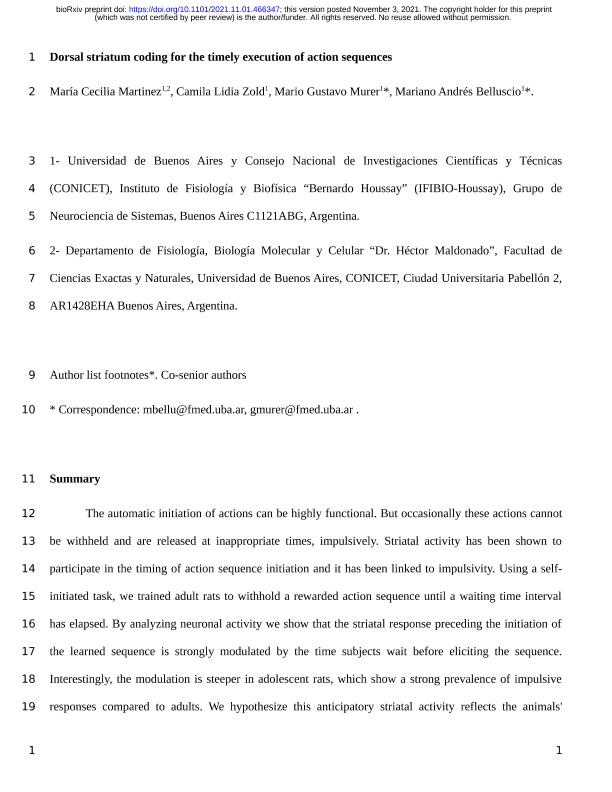Artículo
Dorsal striatum coding for the timely execution of action sequences
Fecha de publicación:
11/2021
Editorial:
Cold Spring Harbor Laboratory
Revista:
biorXiv
ISSN:
2692-8205
e-ISSN:
2692-8205
Idioma:
Inglés
Tipo de recurso:
Artículo publicado
Clasificación temática:
Resumen
The automatic initiation of actions can be highly functional. But occasionally these actions cannot be withheld and are released at inappropriate times, impulsively. Striatal activity has been shown to participate in the timing of action sequence initiation and it has been linked to impulsivity. Using a self- initiated task, we trained adult rats to withhold a rewarded action sequence until a waiting time interval has elapsed. By analyzing neuronal activity we show that the striatal response preceding the initiation of the learned sequence is strongly modulated by the time subjects wait before eliciting the sequence. Interestingly, the modulation is steeper in adolescent rats, which show a strong prevalence of impulsive responses compared to adults. We hypothesize this anticipatory striatal activity reflects the animals? subjective reward expectation, based on the elapsed waiting time, while its steeper waiting modulation in adolescence reflects age-related differences in temporal discounting, internal urgency states or explore- exploit balance.
Palabras clave:
STRIATUM
,
REWARD
,
ANTICIPATORY ACTIVITY
,
ACTION SEQUENCE
Archivos asociados
Licencia
Identificadores
Colecciones
Articulos(IFIBIO HOUSSAY)
Articulos de INSTITUTO DE FISIOLOGIA Y BIOFISICA BERNARDO HOUSSAY
Articulos de INSTITUTO DE FISIOLOGIA Y BIOFISICA BERNARDO HOUSSAY
Citación
Martínez, María Cecilia; Zold, Camila Lidia; Murer, Mario Gustavo; Belluscio, Mariano Andres; Dorsal striatum coding for the timely execution of action sequences; Cold Spring Harbor Laboratory; biorXiv; 11-2021; 1-57
Compartir
Altmétricas




